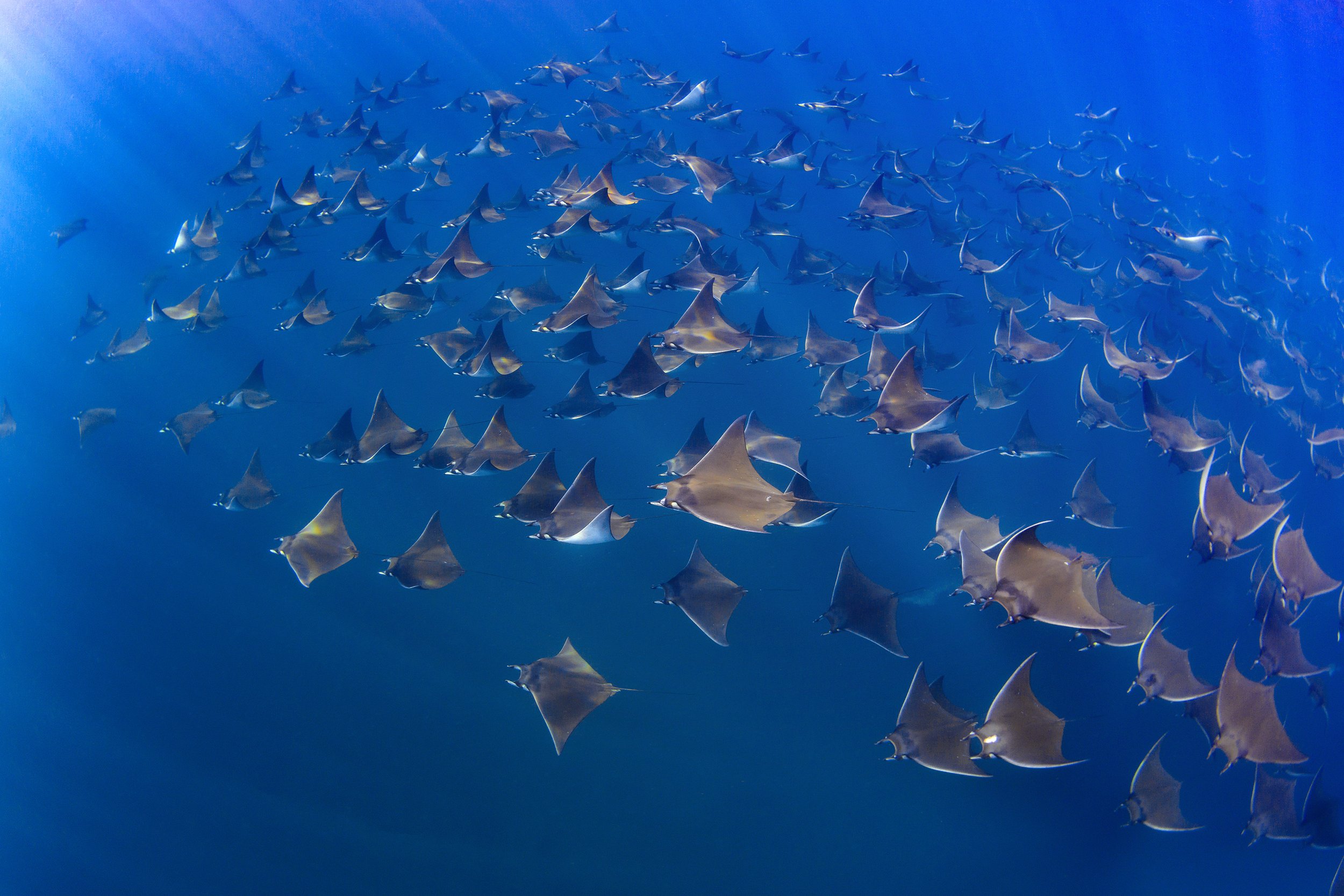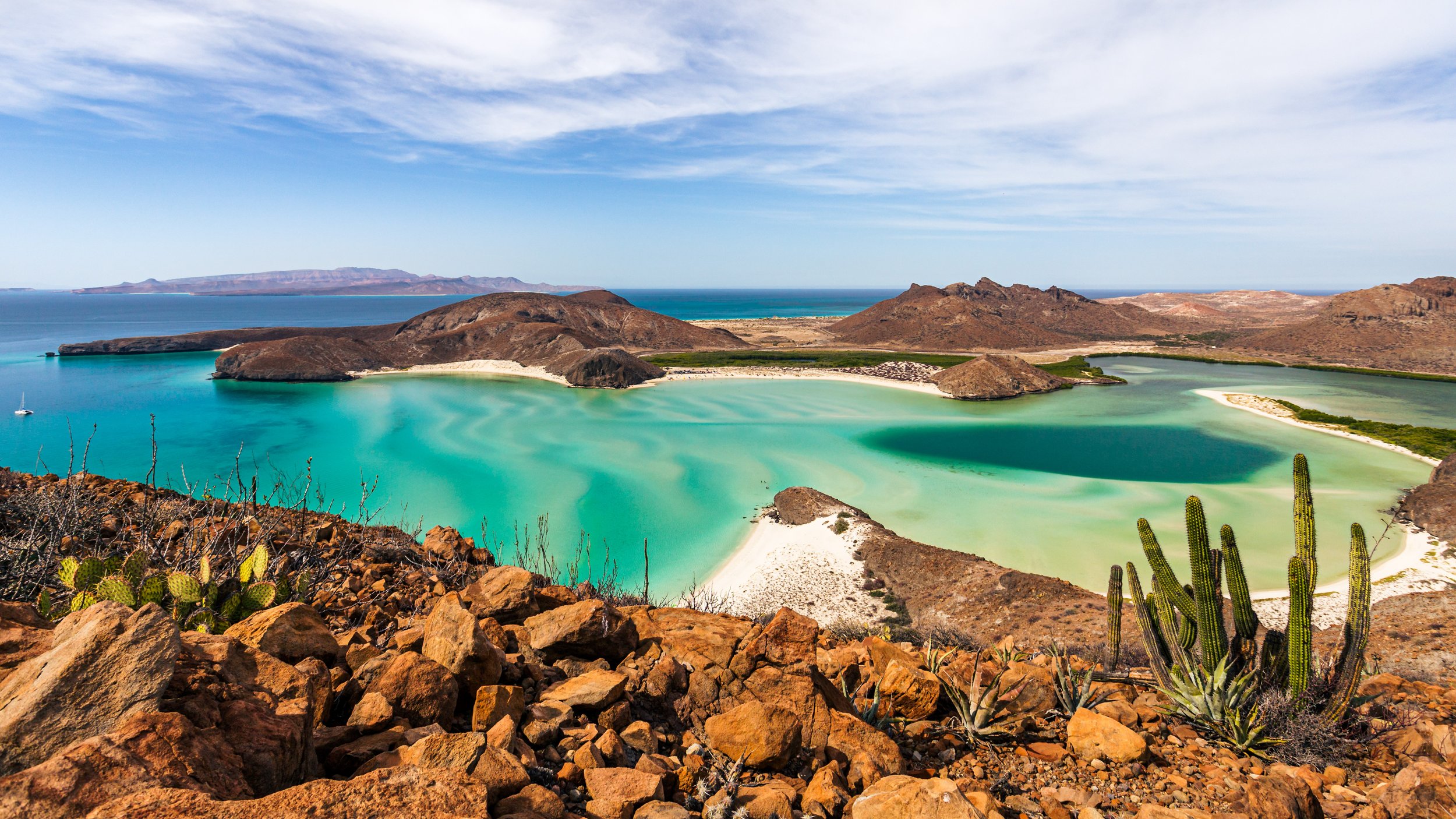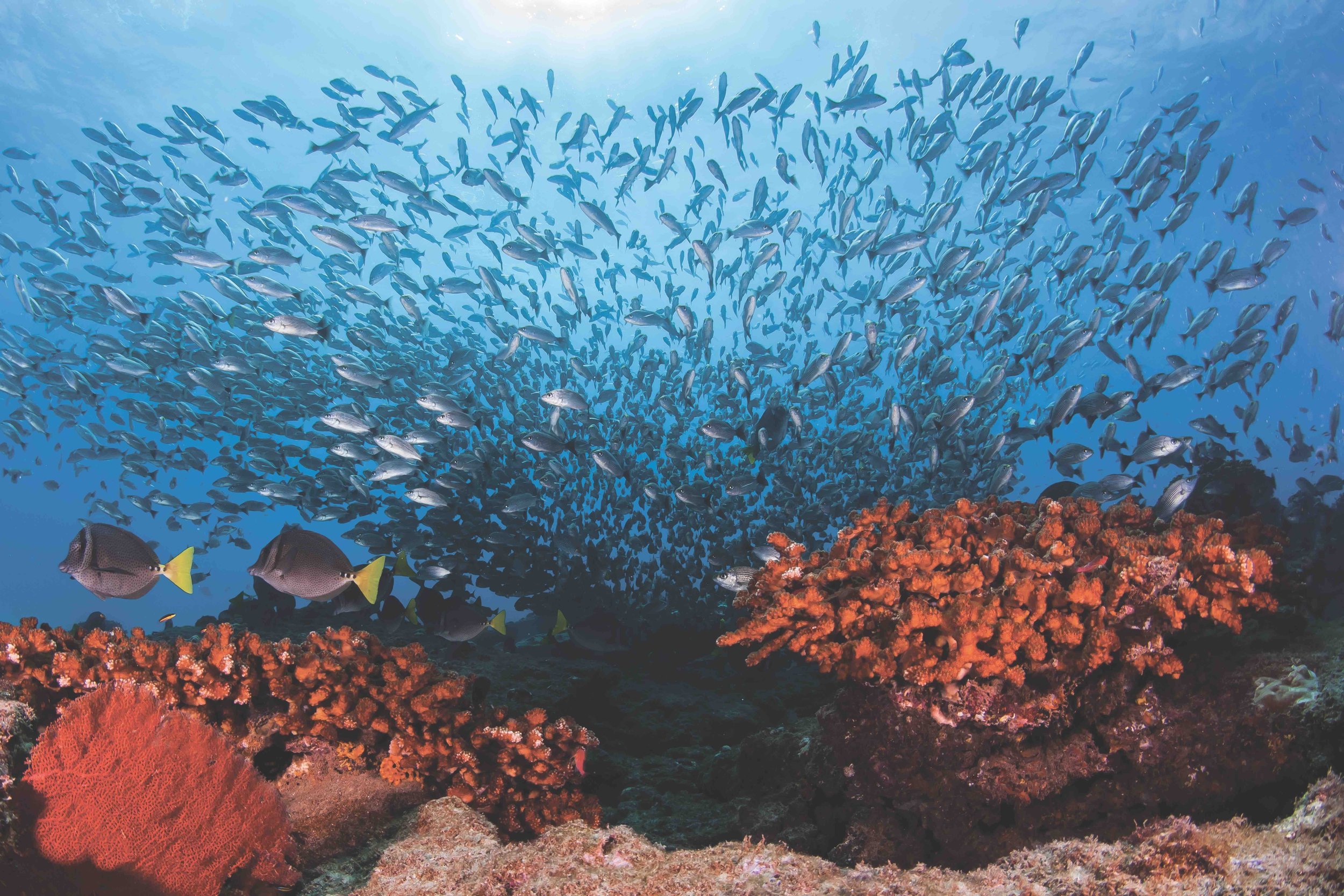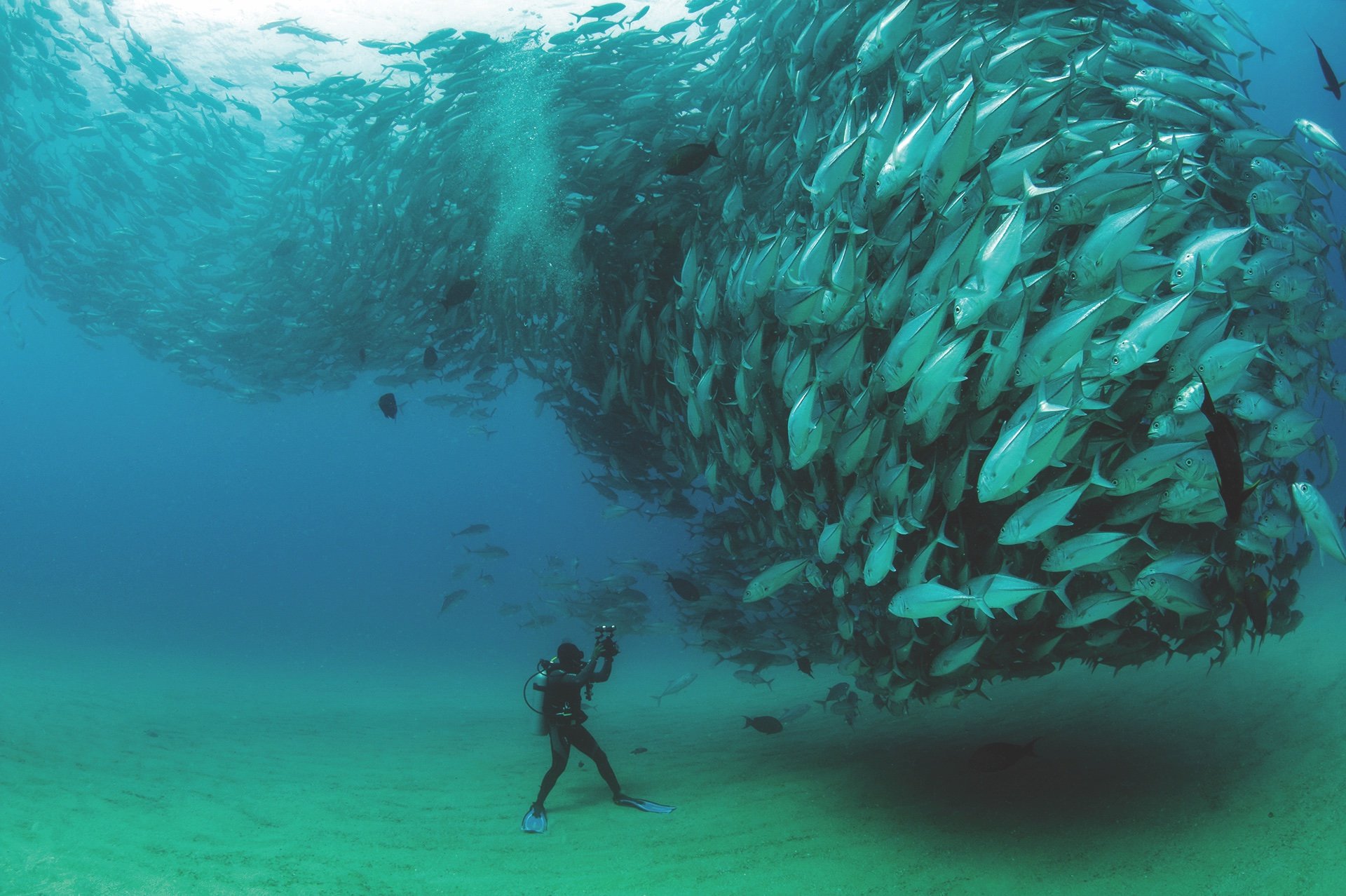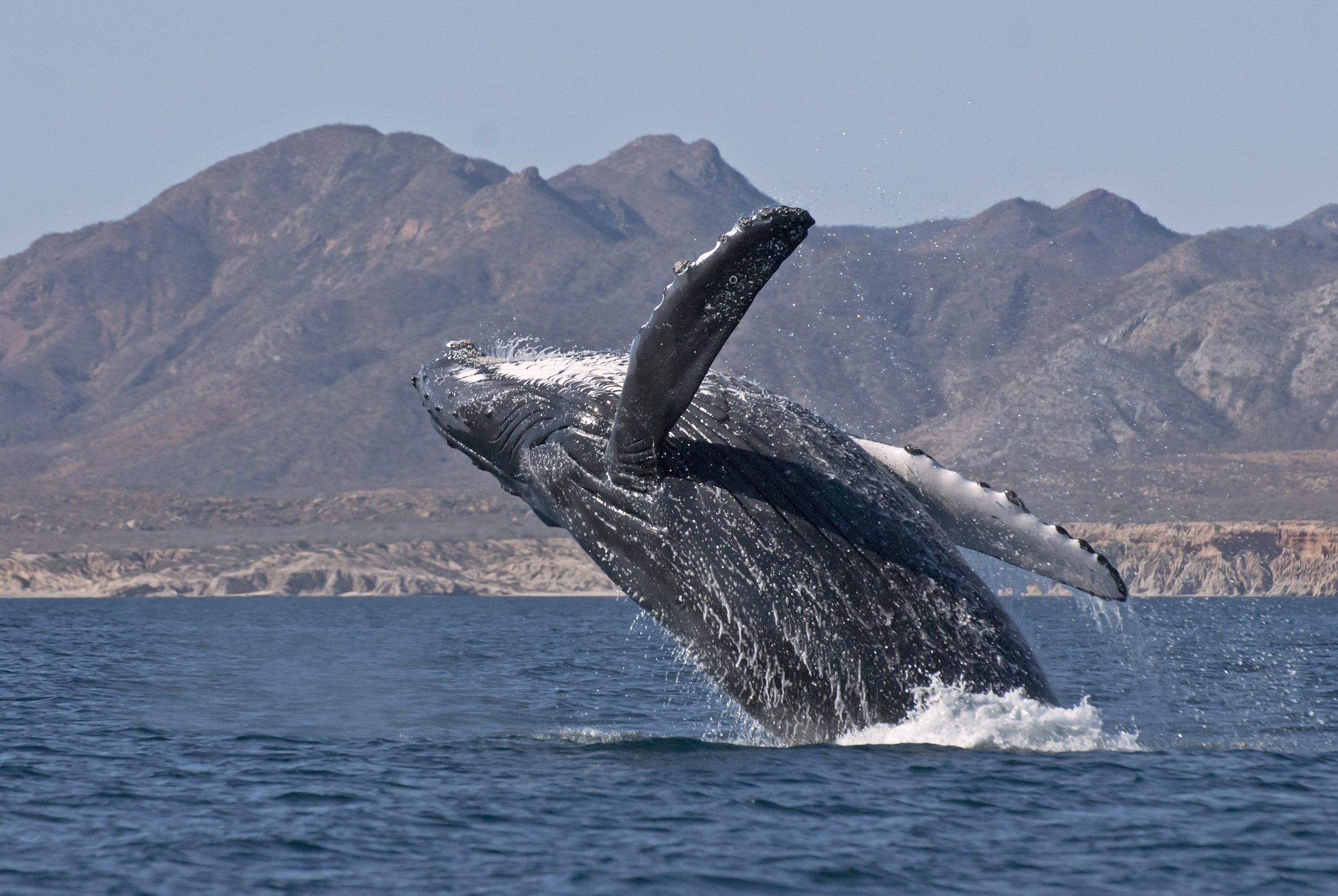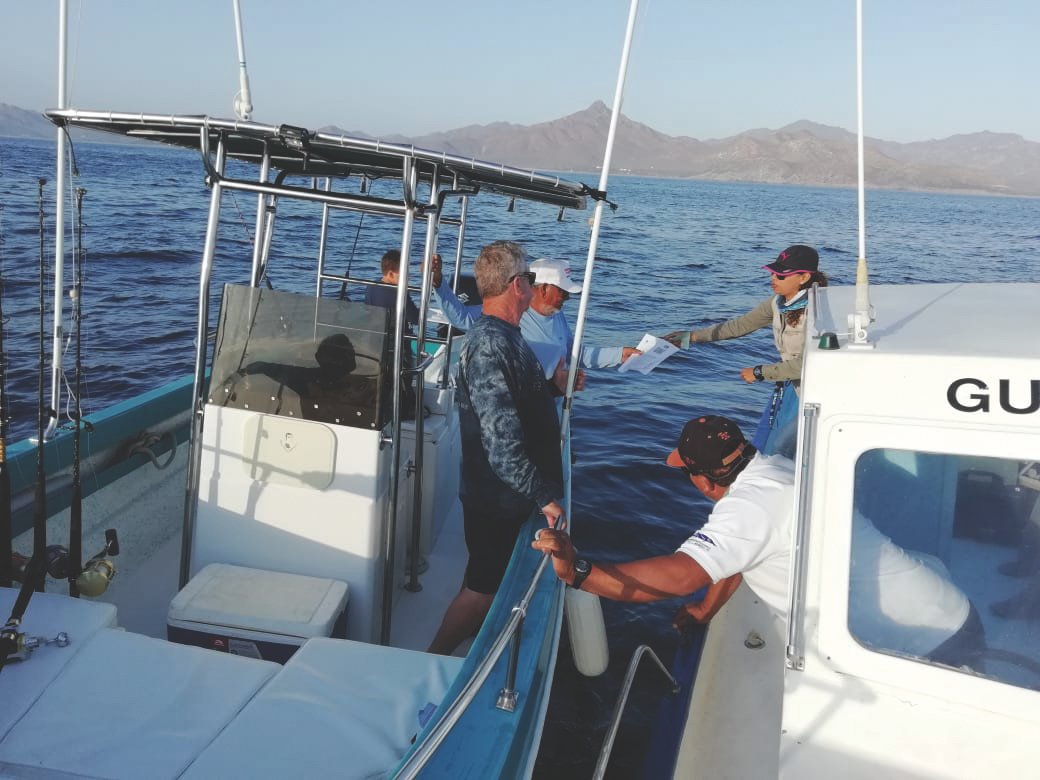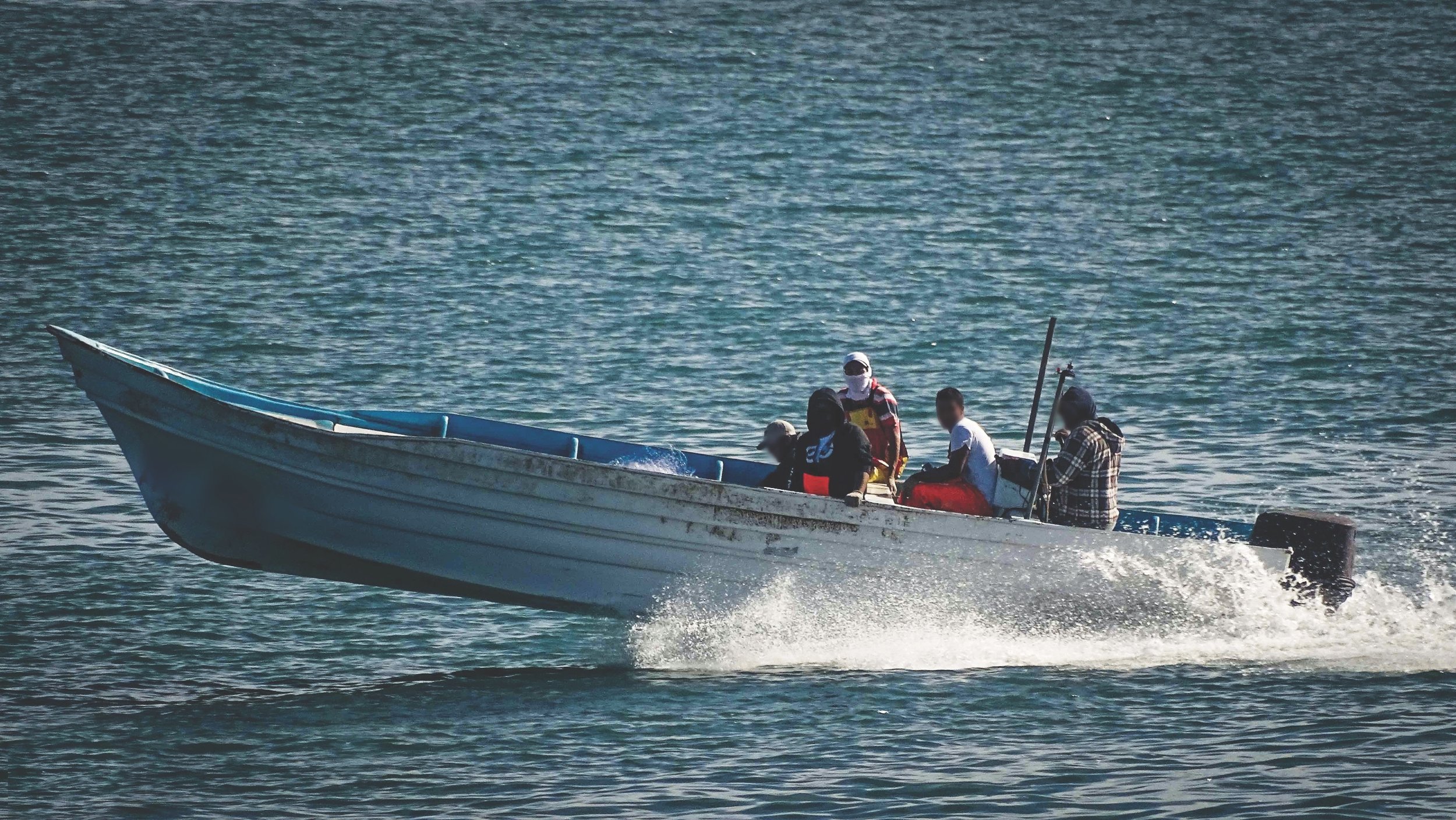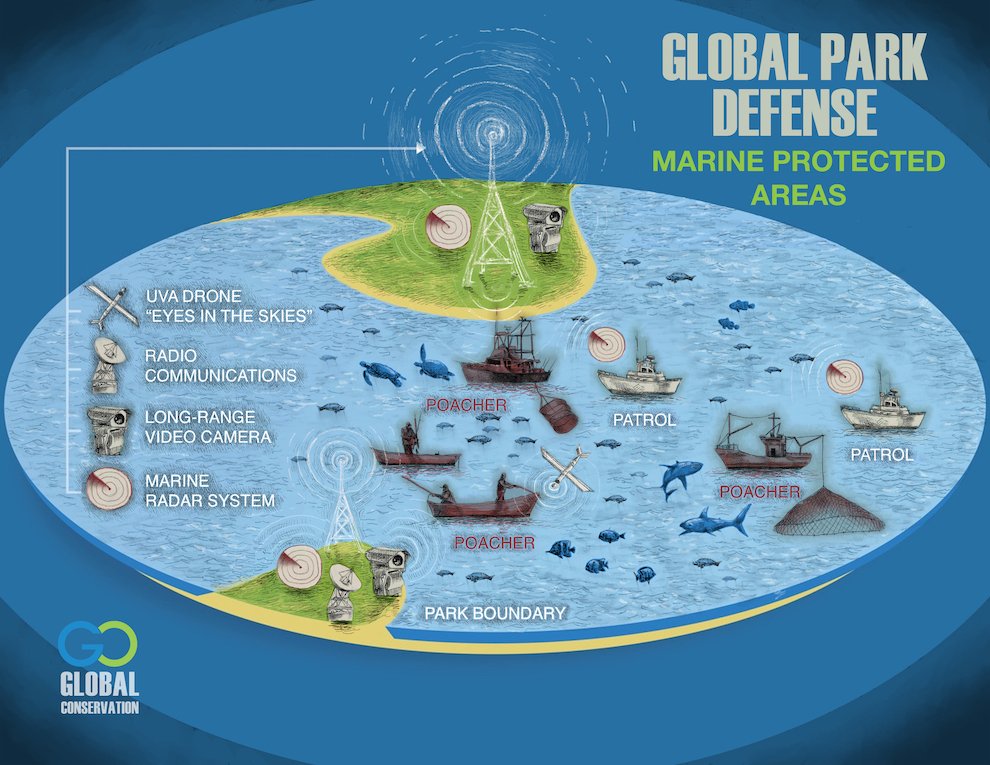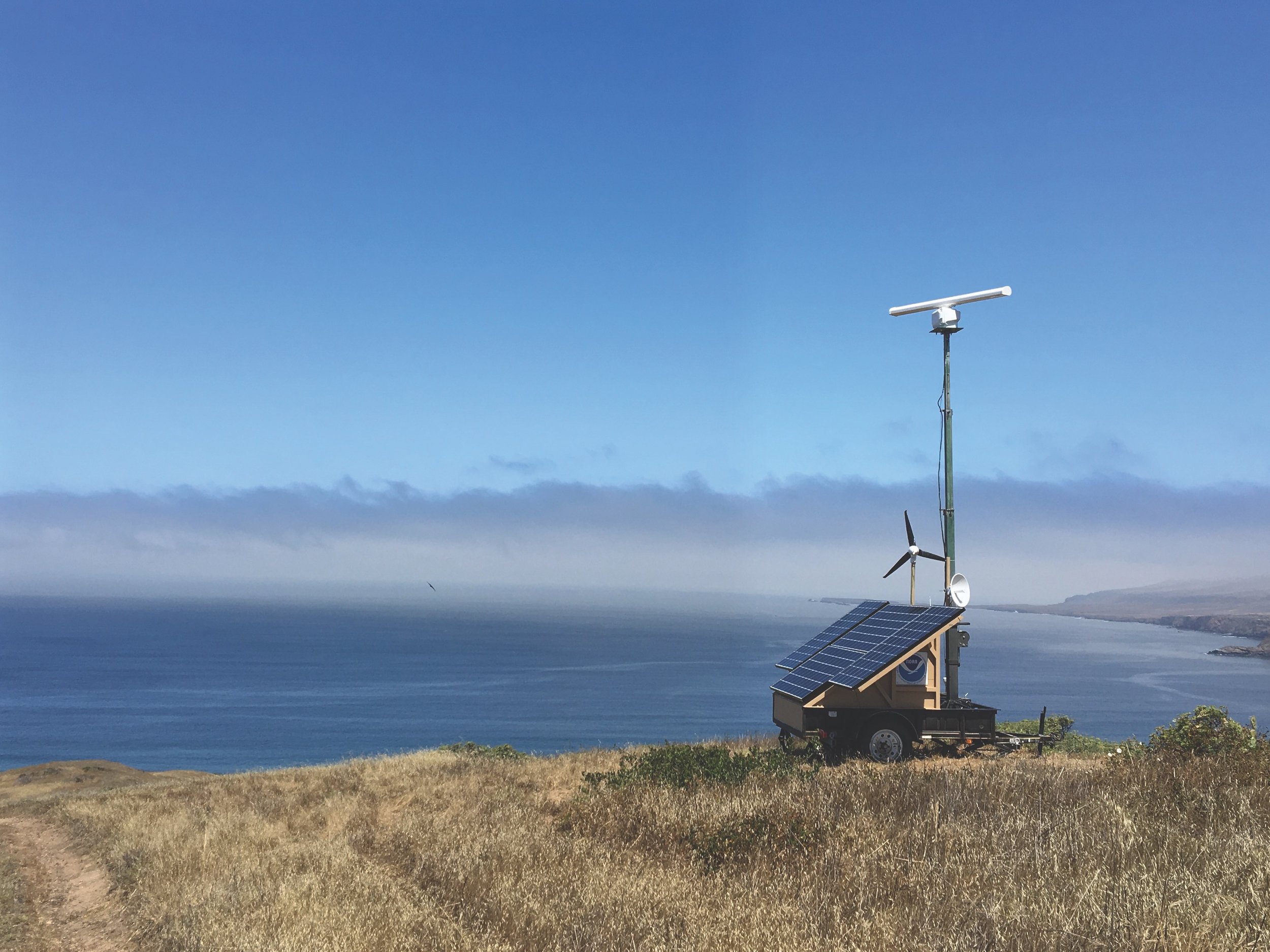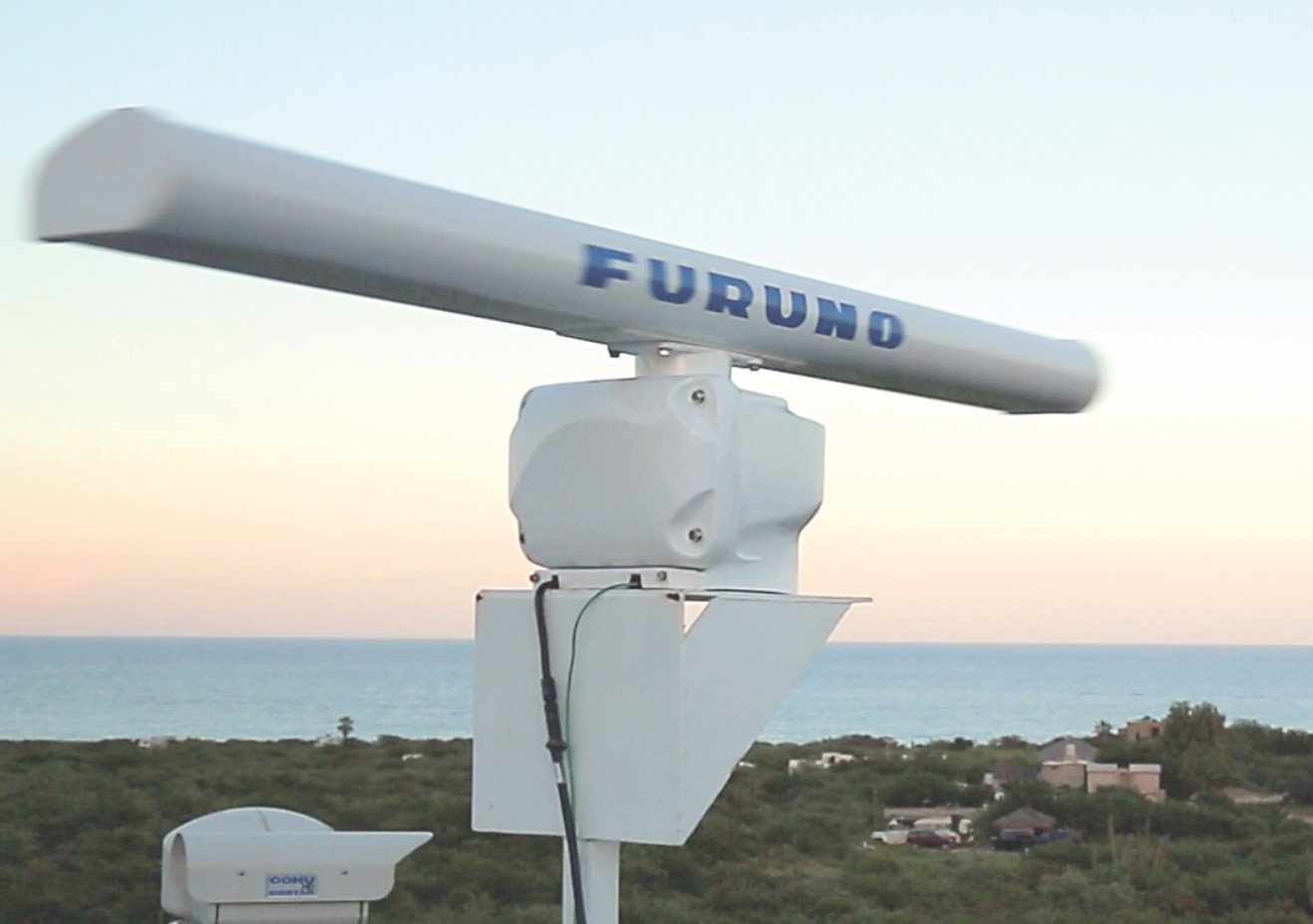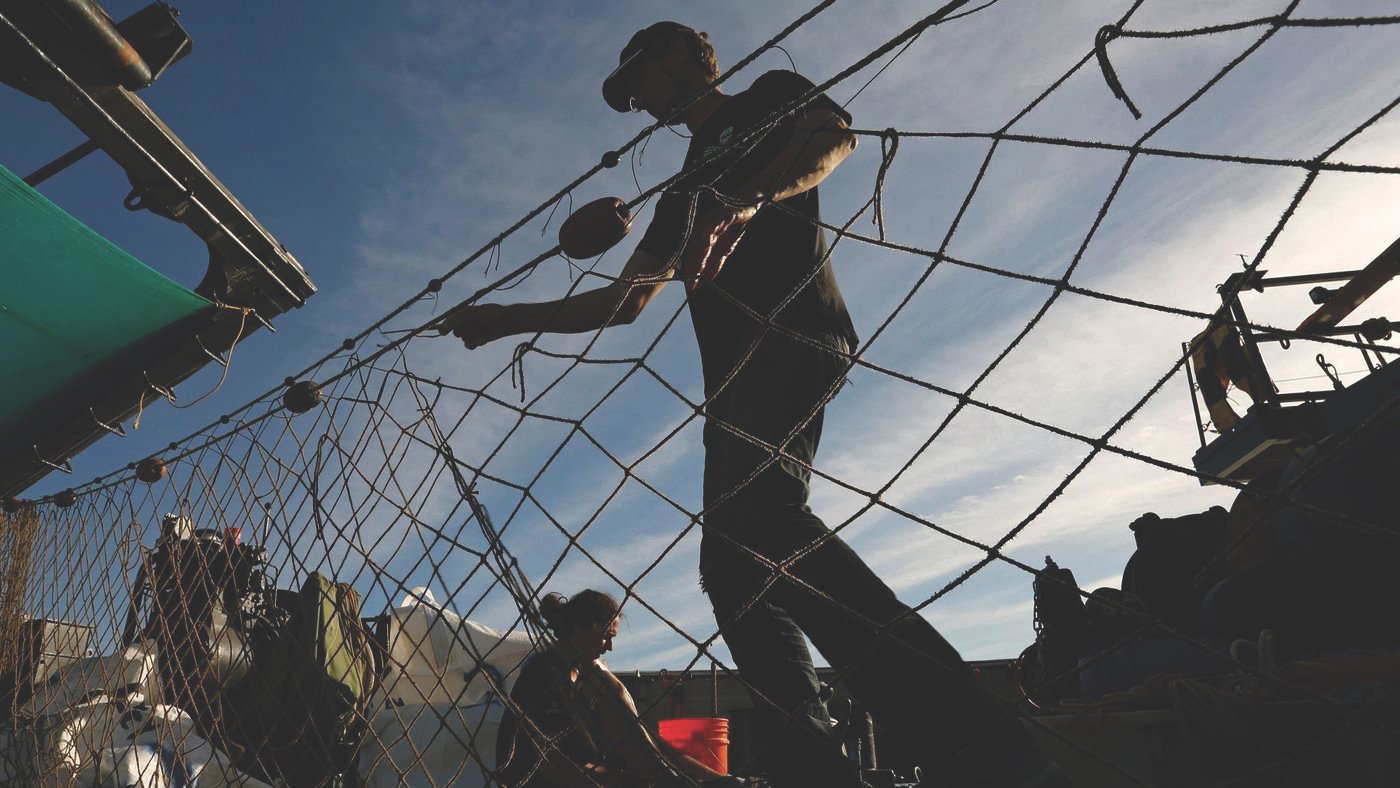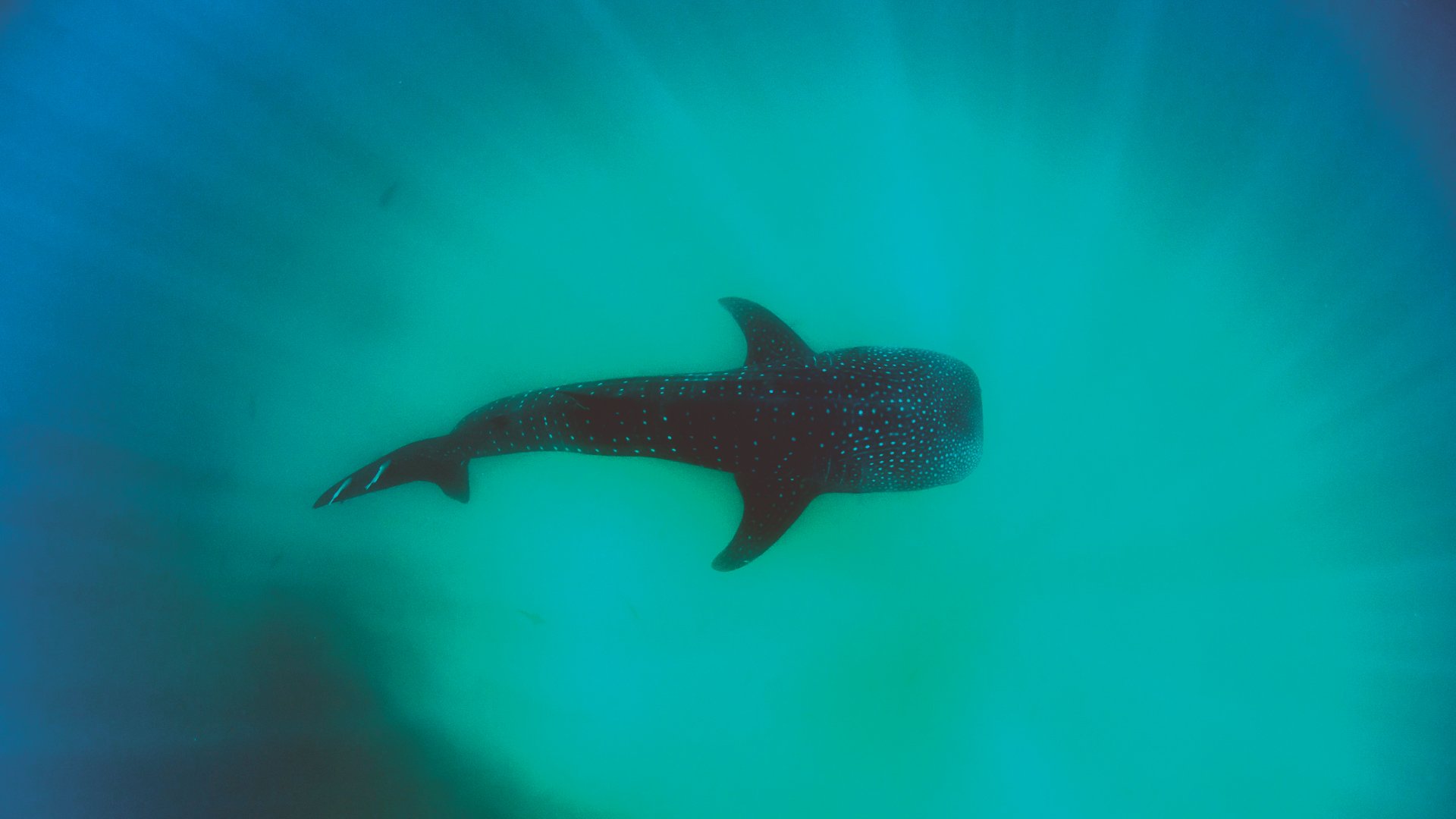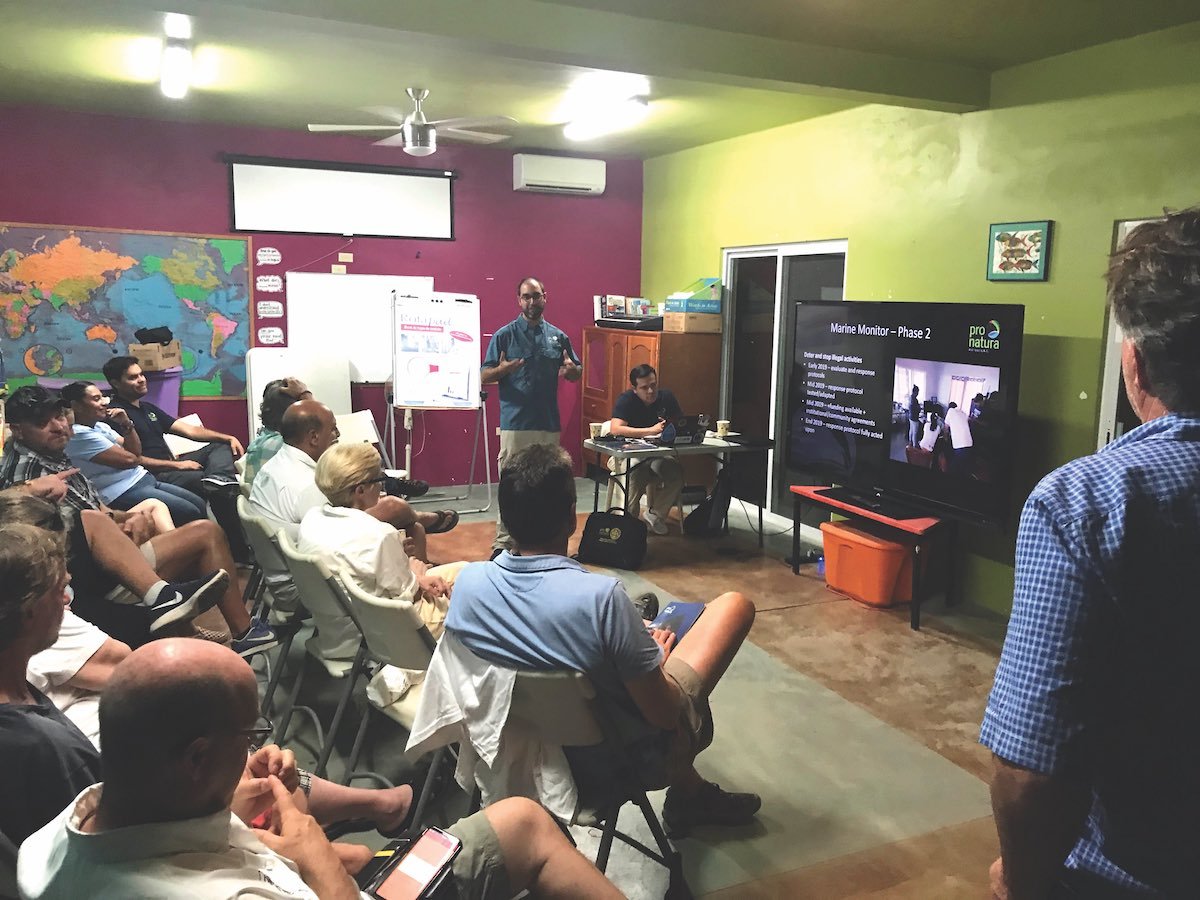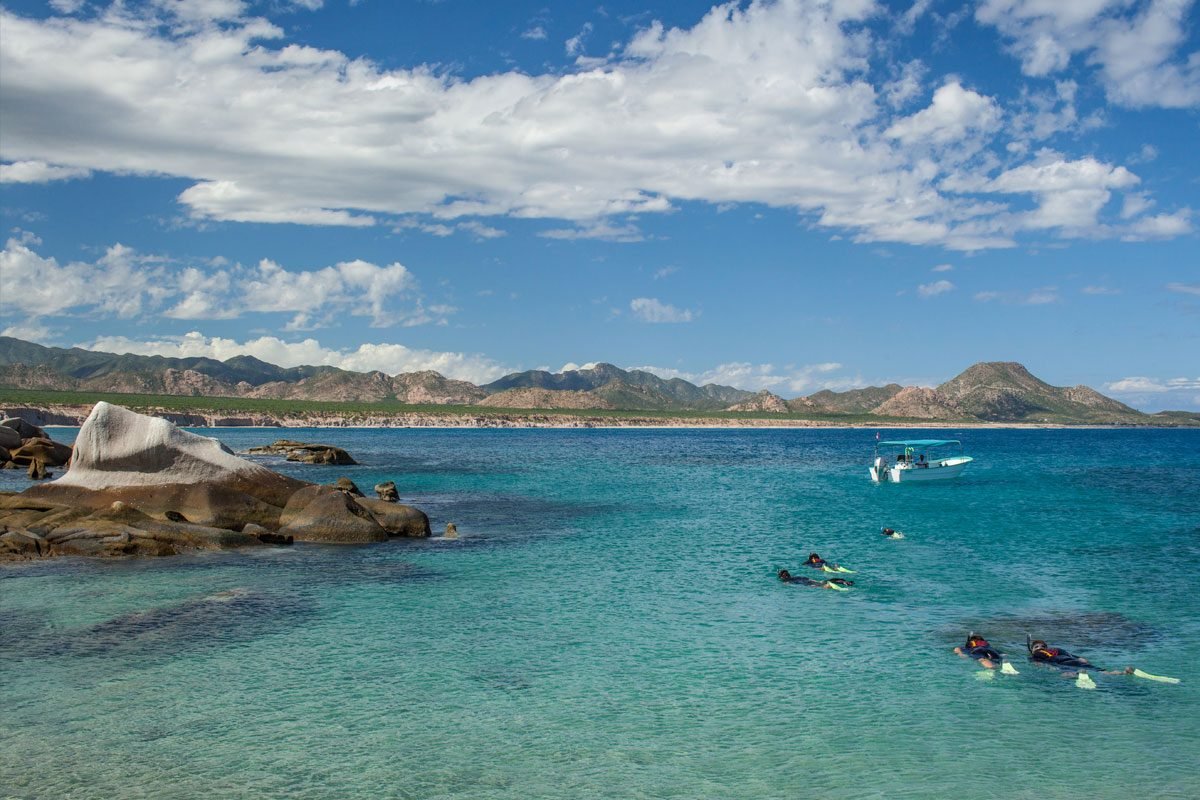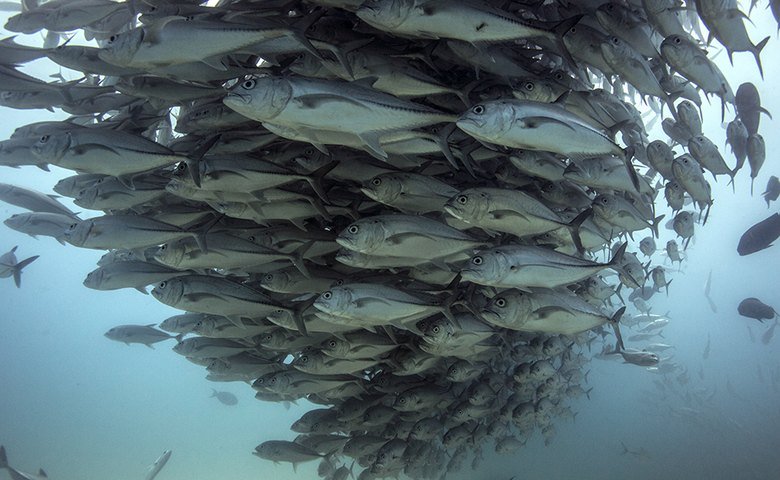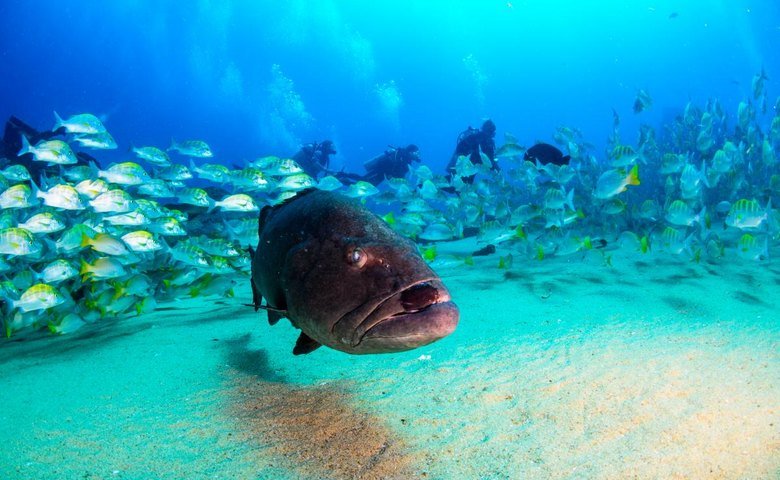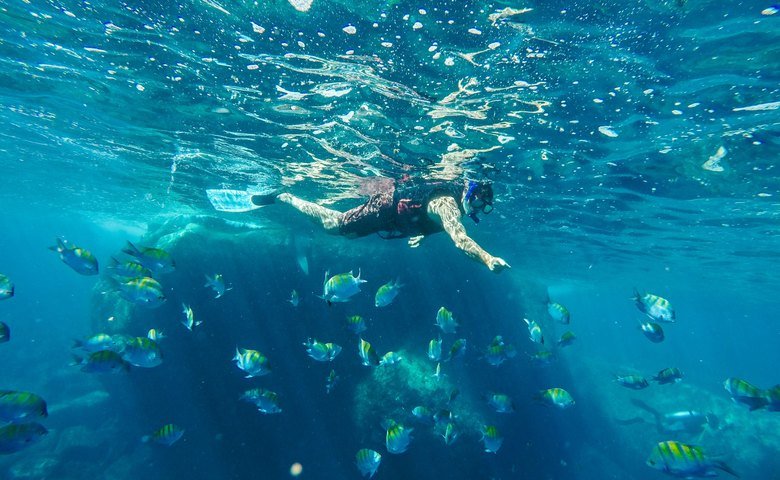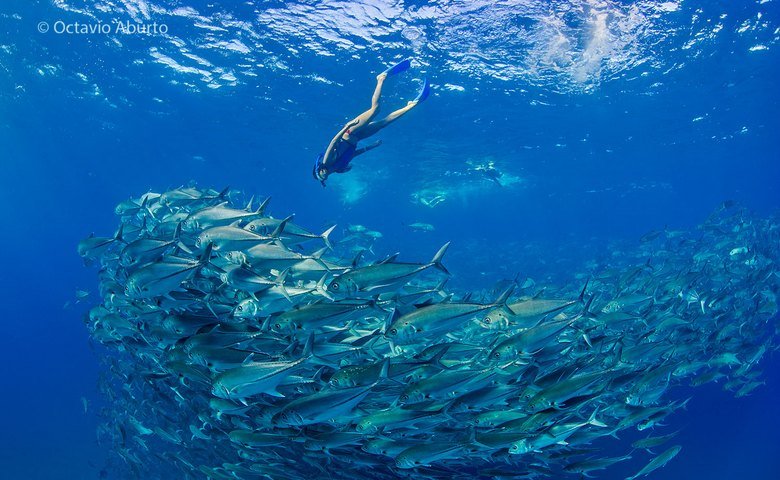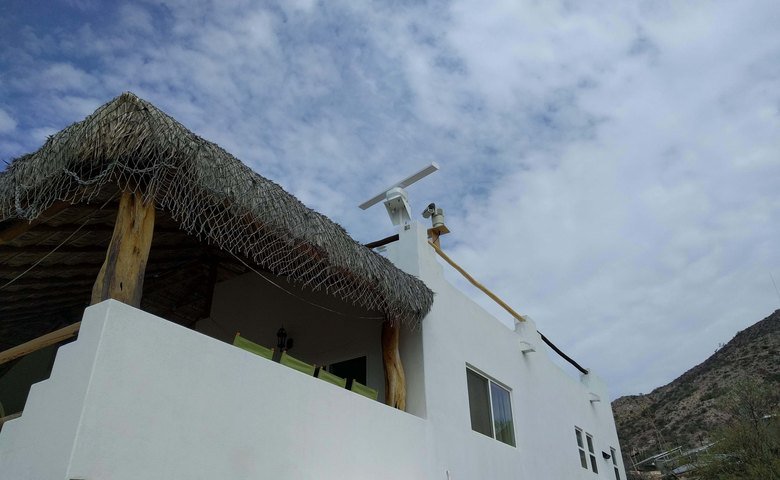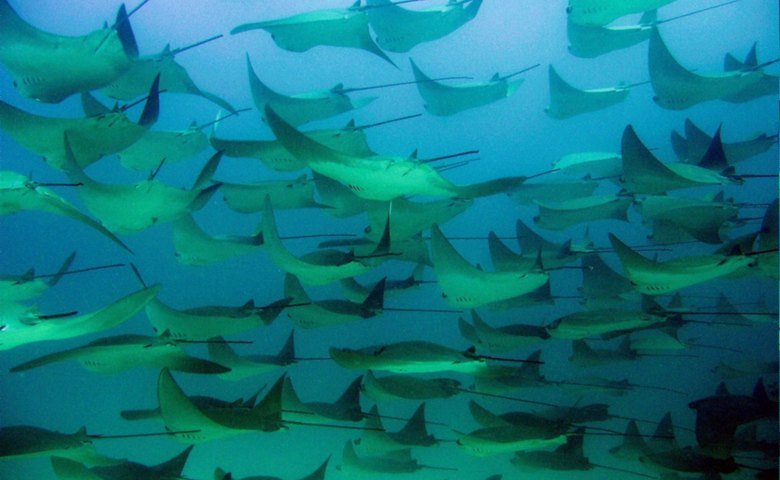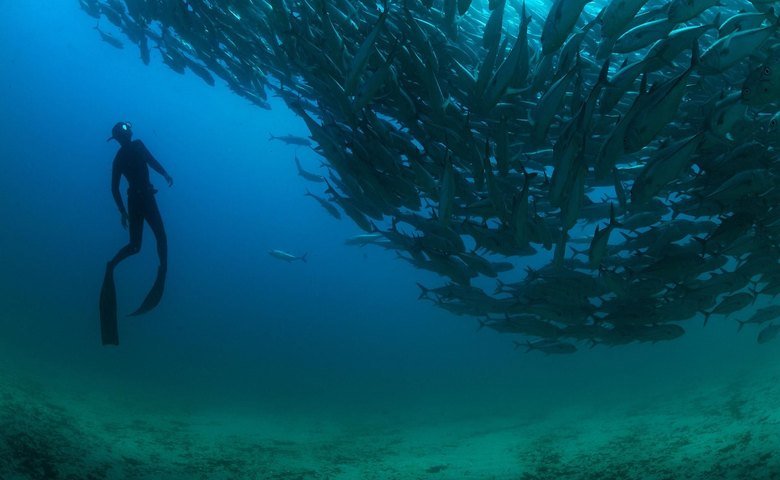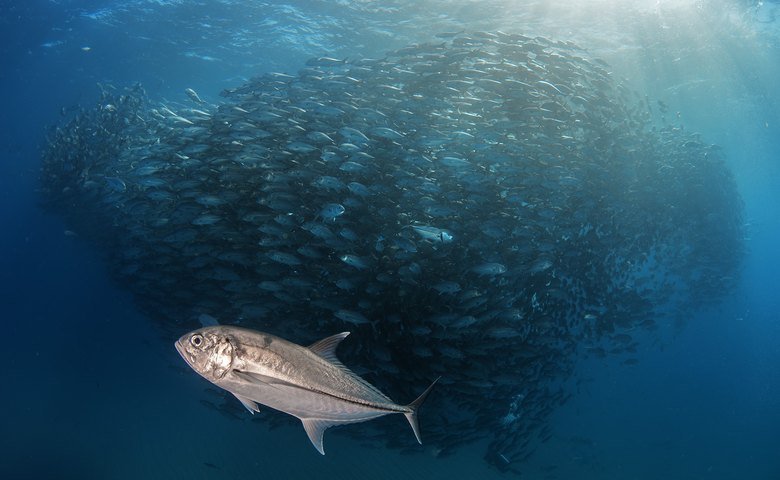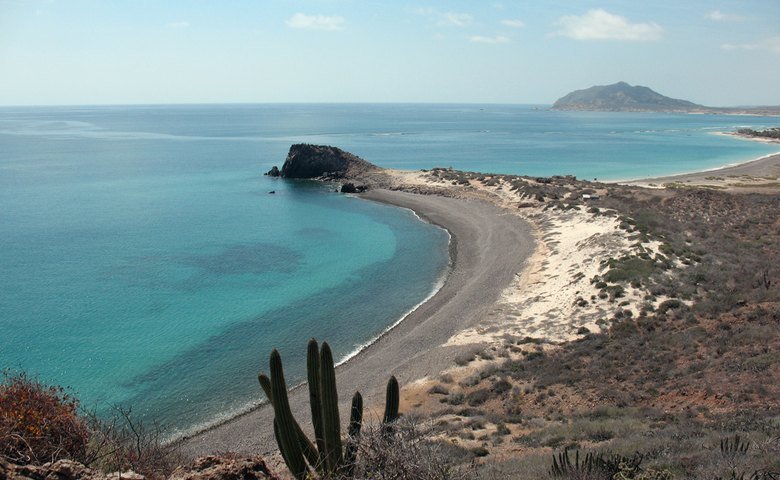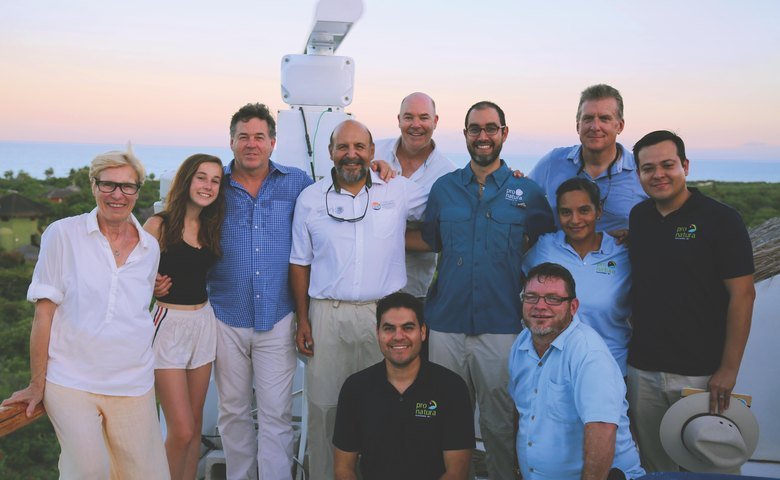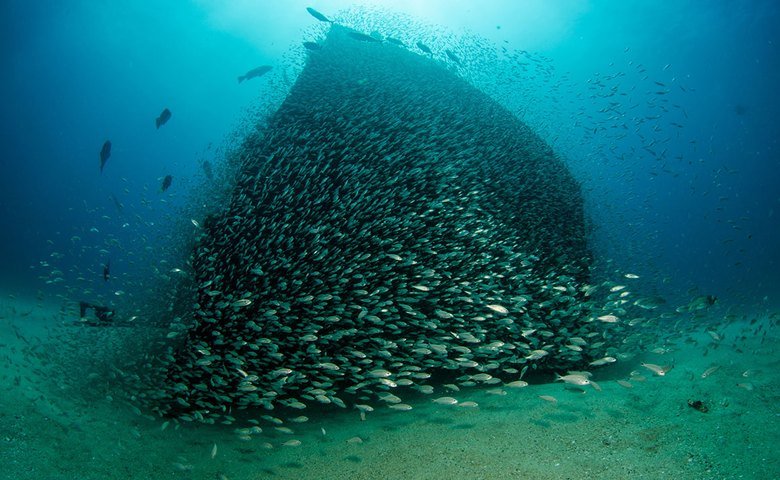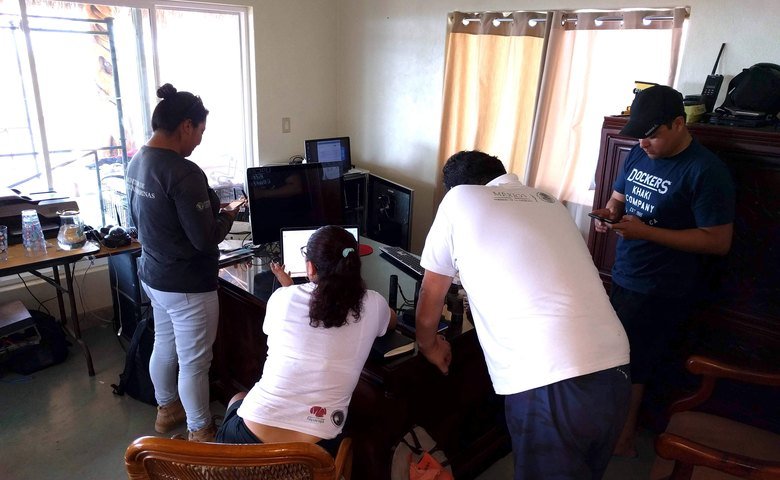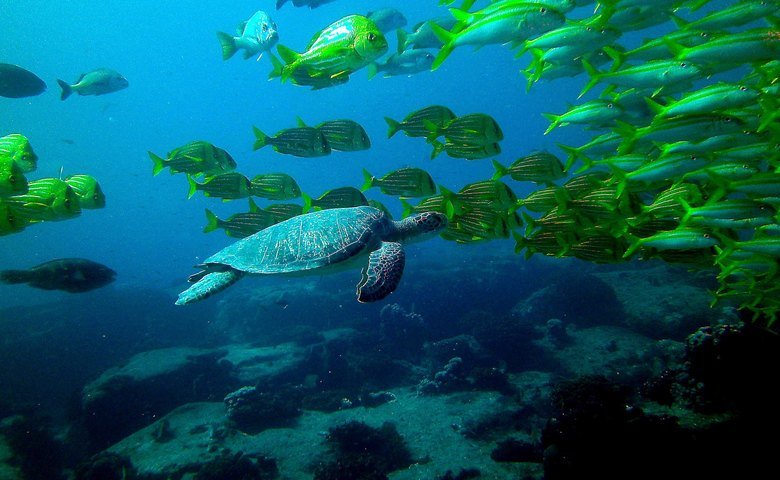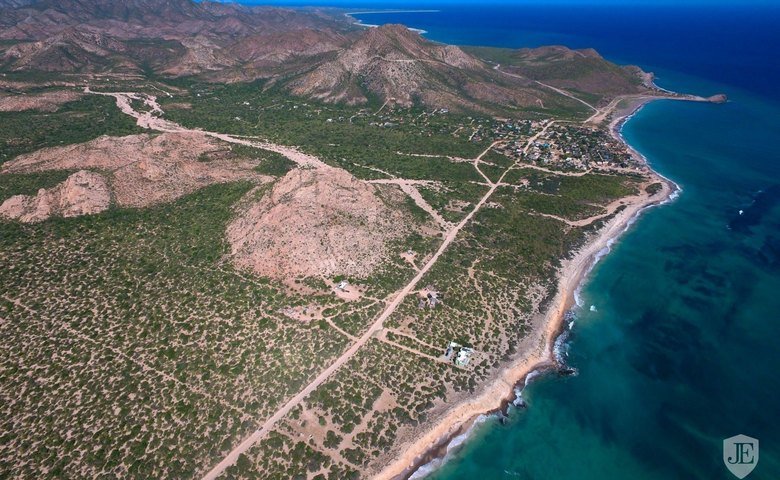Baja Sur Marine Protection, Mexico
Mobula rays gather in the thousands in the waters of Baja Sur, but scientists don't exactly know why. It's possible that they are trying to find mates or that they hunt together for safety in numbers.
Overview
The Gulf of California and Baja California Sur are global marine biodiversity treasures. More than 800 species of fish, > 4000 species of invertebrates, 17 species of seabirds, 70% of marine mammals species, and 5 species of sea turtles make these waters their home. For a long time, small-scale artisanal fisheries were not regulated in this part of Mexico, leading to signs of decline in marine habitat, fish, and wildlife.
SIZE
213,700 Hectares
GOAL
$240,000
VISITORS BY 2030
22,000
Introduction
The focus of Global Conservation is on community-based marine protection initiatives and the protection of marine national parks from Loreto to Eastscape.
Within this region, National Parks protect not only marine biodiversity but also promote a local identity, providing jobs (artisanal and sport fishing, marine ecotourism, tourism), food, economy, and recreational sites. Outside of the national parks, however, there are amazing community-based efforts to protect fisheries and ways of making a living in the marine corridor Loreto–La Paz. Small-scale fisheries and sport fishing provide food and jobs for locals, and local pride, along with a fisheries law, could improve current efforts to protect the marine environment against major threats like climate change, illegal fishing, industrial fishing, and IUU fishing.
In collaboration with our local partners, authorities, and new partnerships, GC is intensifying our Global Park Defense efforts to safeguard the marine environment along the east coast of Baja California Sur. This includes bolstering marine protection in iconic locations like San Basilio and World Heritage Sites like Loreto Bay National Park, traversing through fisheries communities to safeguard their fishing refugees, and covering an area of over 250,000 hectares (2500 sq km). We are also delivering technology, upgrading the Loreto NP Command and Monitor Center, providing financial support to enhance marine patrols, and providing training, technical assistance, networking, and mentorship.
In 2023, Global Conservation secured and matched funding for active protection alongside foundations, creating the necessary conditions to ensure marine patrols, train, and refine our GPD. This was achieved by incorporating solutions such as Earthranger, Skylight, and our Marine Monitors, which enable real-time tracking of vessels of all types. Our approach allows the National Park and marine guardians to monitor large areas (70,000 hectares), saving time and money, and enabling the launch of planned patrols based on smart alerts and remote detection.
We would like to acknowledge the Loreto Bay NP rangers for their invaluable commitment and dedication, which have made these achievements possible in Loreto National Park. Their efforts have consolidated this MPA as a regional example of marine protection and surveillance, leading to effective management.
What may seem to be mostly barren desert islands and peninsulas are actually bursting with life. Coyotes, birds of prey, small birds, rodents, lizards, cactus plants, and much more call these lands home.
Natural History
The site comprises 244 islands, islets, and coastal areas that are located in the Gulf of California in northeastern Mexico. The Sea of Cortez and its islands have been called a natural laboratory for the investigation of speciation. Moreover, almost all major oceanographic processes occurring in the planet’s oceans are present in the property, giving it extraordinary importance for study. The site is one of striking natural beauty in a dramatic setting formed by rugged islands with high cliffs and sandy beaches, which contrast with the brilliant reflection from the desert and the surrounding turquoise waters. It is home to 695 vascular plant species, more than in any marine and insular property on the World Heritage List. Equally exceptional is the number of fish species: 891, 90 of them endemic. Furthermore, the site contains 39% of the world’s total number of species of marine mammals and a third of the world’s marine cetacean species.
The area has striking natural beauty and provides a dramatic setting due to the rugged forms of the islands, with high cliffs and sandy beaches contrasting with the brilliant reflection from the desert and the surrounding turquoise waters. The diversity of forms and colors is complemented by a wealth of birds and marine life. The diversity and abundance of marine life associated with spectacular submarine forms and high water transparency makes the property a diver’s paradise.
Baja Sur represents a unique example in which there are simultaneously “bridge islands,” which were once connected to a primary landmass, and oceanic islands, which were formed entirely from the ocean floor. Moreover, almost all major oceanographic features occurring in the planet’s oceans are present here, giving it extraordinary importance for the study of marine and coastal processes. The variety and abundance of Baja Sur’s geographic morphology are indeed supporting the high marine productivity and biodiversity richness that characterize the Gulf of California.
Saving Baja Sur
Thanks to this remarkable diversity, the Sea of Cortez is a global conservation gem. Its waters are invaluable to science and as a fisheries and tourism resource that benefits local people. An investment in this area’s protection and conservation is an investment in local communities.
Despite protection, over the past 10 years, the area has endured pressures from commercial fishing and abuse from uninformed visitors. Plans for enormous coastal development projects have threatened to put unsustainable pressure on the reef.
Illegal fishing by both sport and commercial fishermen has caused damage to the National Marine Park, but in a region where local communities live on the seafood they catch by hand, enforcing the ban on fishing presents a challenge.
Unfortunately, marine managers frequently have limited financial and human resources, making it difficult to effectively manage such areas. Military radar systems for monitoring marine activity exist but cost hundreds of thousands of dollars, well beyond the financial resources available to marine managers.
To protect this unique place, Global Conservation and the Anthropocene Institute (AI) are working with ProNatura Mexico to deploy Marine Monitor (M2) radar systems, long-range cameras, UAV drones, and SMART patrols.
Global Conservation is also supporting next-generation industrial design and engineering for a new off-grid Mobile Marine Monitor (M3) trailer system that can be shipped in standard containers anywhere in the world. As the number of MPAs continues to increase globally, it is vital that managers monitor boat activity within and around MPAs. We hope that this pioneering model will be adopted in MPAs across Mexico.
Partners in Conservation
ProNatura is an organization that has been dedicated for almost 40 years to the conservation of Mexican biodiversity and ecosystem services. They are committed to finding sustainable and innovative solutions to major conservation challenges like climate change, watershed protection, and ecosystem restoration, seeking ultimately to contribute to the creation of a just and equitable society in harmony with nature.
Anthropocene Institute / ProtectedSeas
The Anthropocene Institute’s mission is to drive thought leadership and investment, seeking to accelerate the technological and community innovations necessary to address the needs of our planet.
ProtectedSeas is a marine conservation organization associated with the Anthropocene Institute, whose mission is to raise awareness and protection of critical marine areas. The organization assists MPA managers in protecting vulnerable ecosystems and works to improve information and transparency around ocean conservation measures. They are working to develop a visual database in map form of every MPA in the world, as well as deploy Marine Monitor radar systems to protect vulnerable areas from illegal activity.
Together, the Anthropocene Institute and ProtectedSeas are the creators of the Marine Monitor (M2) and Mobile Marine Monitor (M3) systems, which are critical to our success in marine protection.
National Commission for Natural Protected Areas (CONANP)
CONANP is our main partner to which we focus our support; their participation is crucial to strengthen the operational capacities for the protection and conservation of the marine protected areas where we collaborate, Loreto, Cabo Pulmo, and the Islas Marías.

